Someplace Else
4123 West Broadway
Robbinsdale
In 2015 I stumbled upon the Keeper of the Flame of Someplace Else, Annette Flaherty, who, with her husband John, built and ran this fabled club in downtown Robbinsdale. Here’s their story, with many thanks!
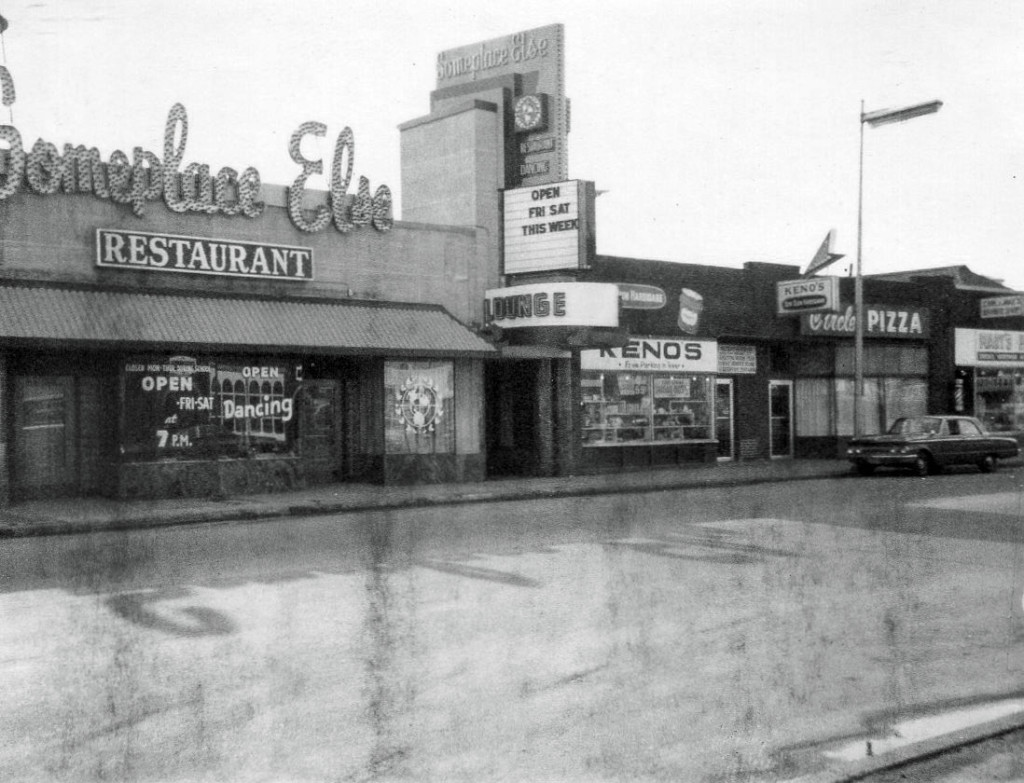
THE HOUSE OF WOO / ROBIN LANES – 4123 West Broadway
John C. Flaherty was a contractor, and took pleasure in making something out of nothing. While an abandoned Chinese restaurant full of grease (yuck!) and the old 6-lane Robin Lanes bowling alley may have looked like a mess to most, John had the vision to picture a swanky restaurant and nightclub – perhaps the one and only in the history of Robbinsdale. Being a Robbinsdale resident and finding this space available, he set his sights on the property, which was owned by Sidney Volk, who also owned several theaters, including Robbinsdale’s Terrace. When asked why he focused on such an improbable endeavor, John told the Music Scene, “Maybe I’m trying to modernize an old town.”
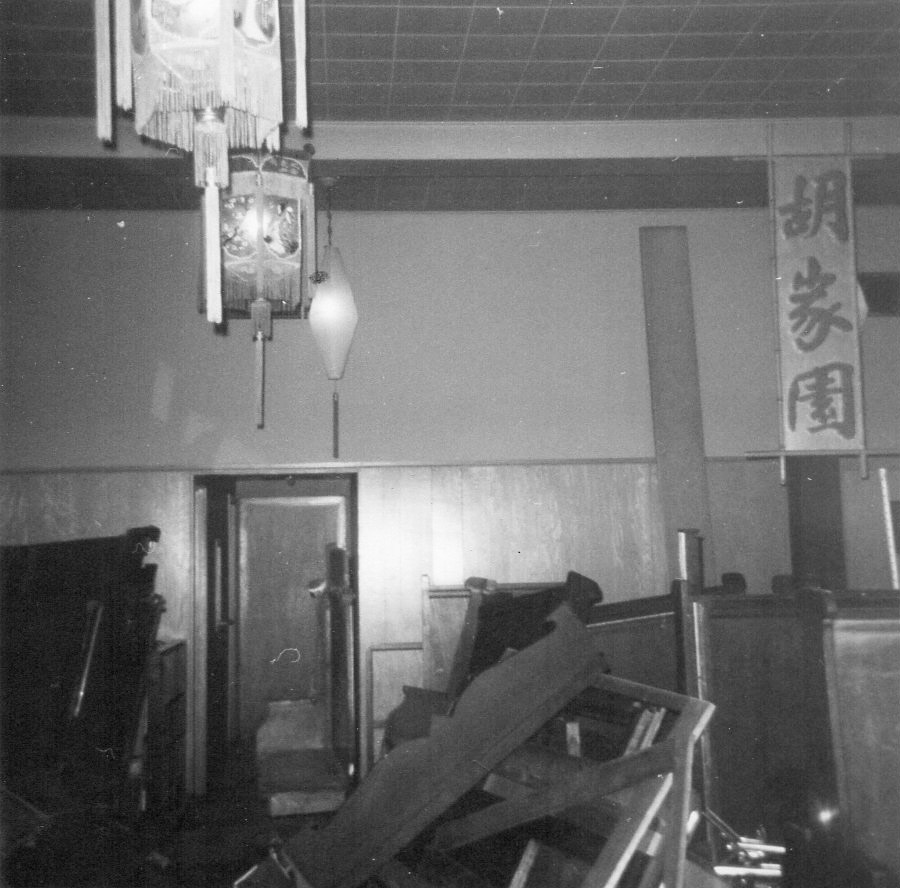
The House of Woo
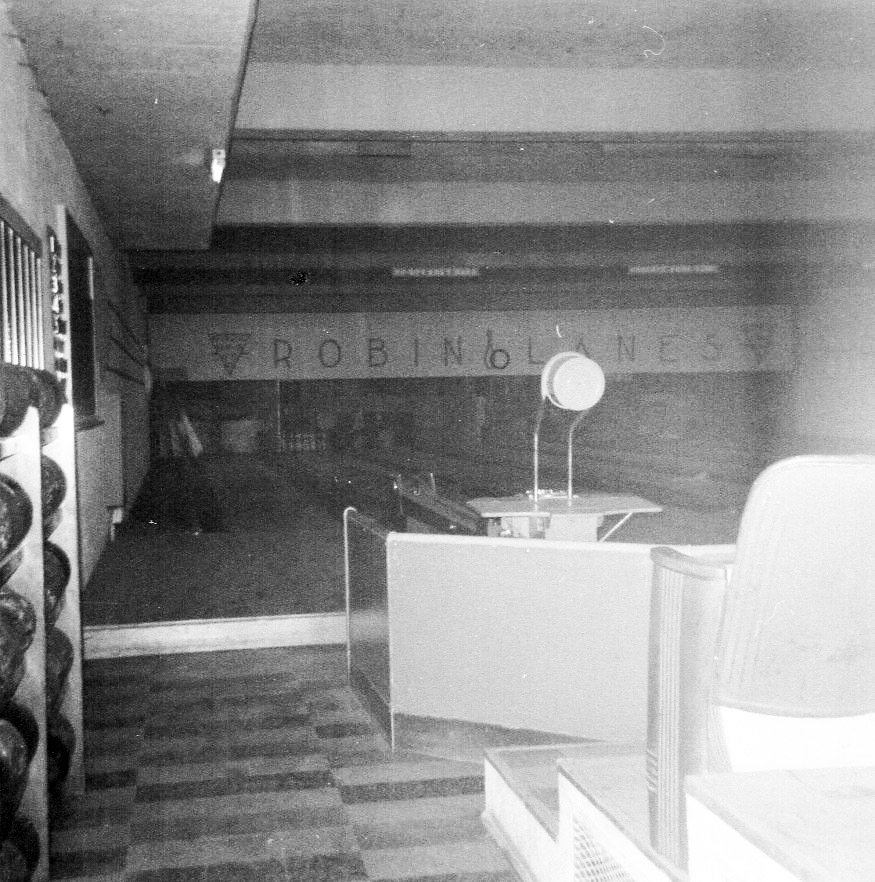
Robin Lanes
BIG PLANS
John’s initial idea for Someplace Else (a name he got from a bar in Wisconsin) was an adult nightclub, with a white tablecloth restaurant in the former House of Woo and a dance floor and stage in the former bowling alley. He approached members of the City Council about getting a set-up license, was given good vibes, and went ahead with his plans. Since Robbinsdale had a municipal liquor store and lounge, all he could hope for was a place where the club provided set-ups and patrons brought their own liquor.
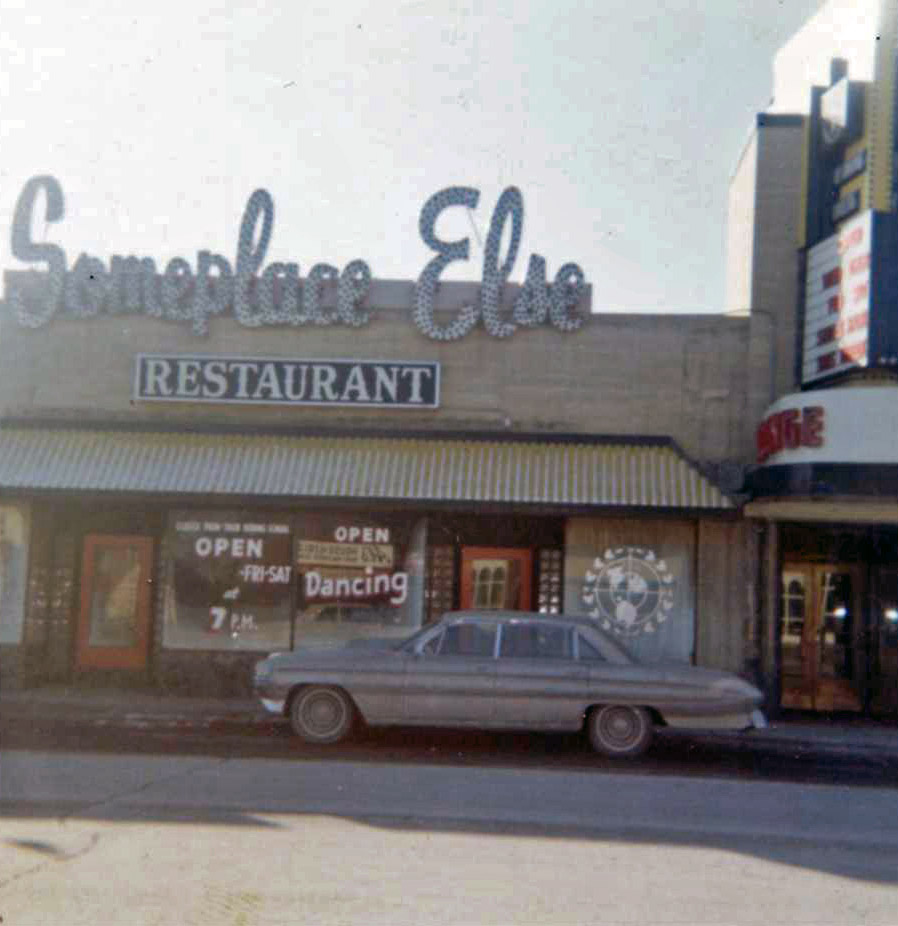
Based on that understanding, in November 1966 the Flahertys, along with partner Ralph L. Reiter, proceeded to spend $60,000 in remodeling and furnishings to make it the “swankiest restaurant and night club that has ever been opened in Robbinsdale.”
THAT SIGN!
The club’s spectacular sign was the largest on West Broadway; provided by an investor who had a sign company, it had 777 lightbulbs. When the club went under the sign was just laid down on the roof; Annette says it might just still be up there!
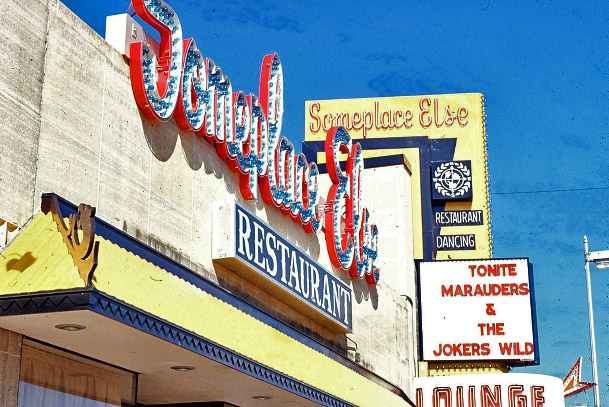
TRICK ENTRY
Don Morrison of the Minneapolis Star described the place as “a former bowling alley that has been converted into a cheerfully nutty layout. You enter from the street into a dead-end foyer. Then, after a financial transaction at the admissions wicket, a wall bookcase slides upward to reveal the entrance to the real ‘else place.”

Wait? Where do I go now?
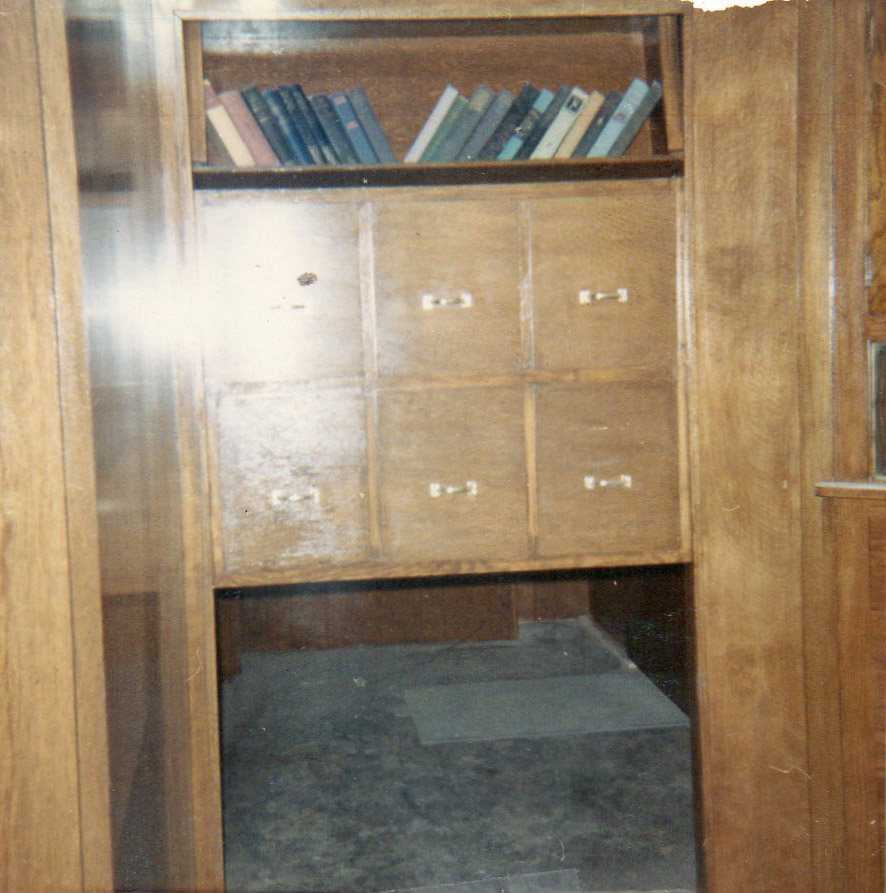
Okay, I see! Very tricky! The door was activated by an operator at an old switchboard.
TRULY SOMEPLACE ELSE
The idea behind Someplace Else was that you could instantly move around the world. The bar had themed rooms: Paris, Ireland, and South Seas. Here’s the South Seas room in the midst of being decorated; it would eventually include aquariums.
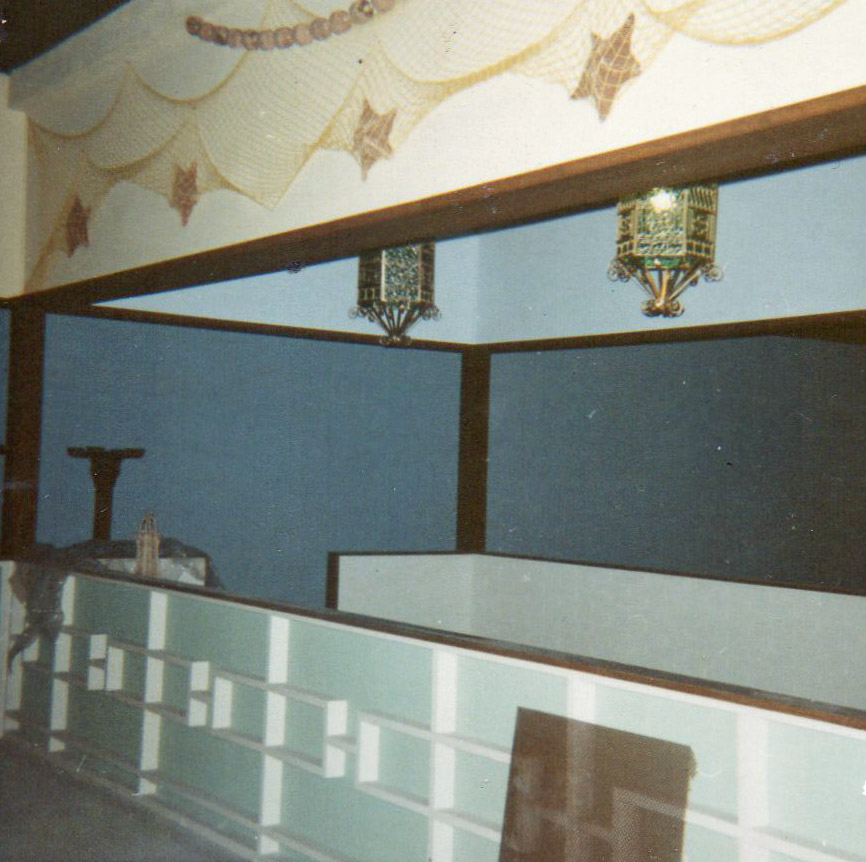
ADULTS ONLY
At first the club was only open to those 21 and over. After all the promises, Flaherty had only been able to get a license to serve 3.2 beer, and it took a lot of haggling to get that. Finally the club opened on March 22, 1967. Entertainment during this adults-only period included:
- The MOB, a 7-piece group from Chicago that dressed like gangsters, March 22 – 28, 1967. The group was assembled and led by Jimmy Ford, musical director of Dick Clark road shows.
- The Hollywood Argyles, March 29 – April 11, 1967.
- The Everly Brothers, April 3 – 9, 1967. (two 3 hour shows nightly). Annette says that Phil and Don couldn’t have been nicer, and hung out with the customers between shows.
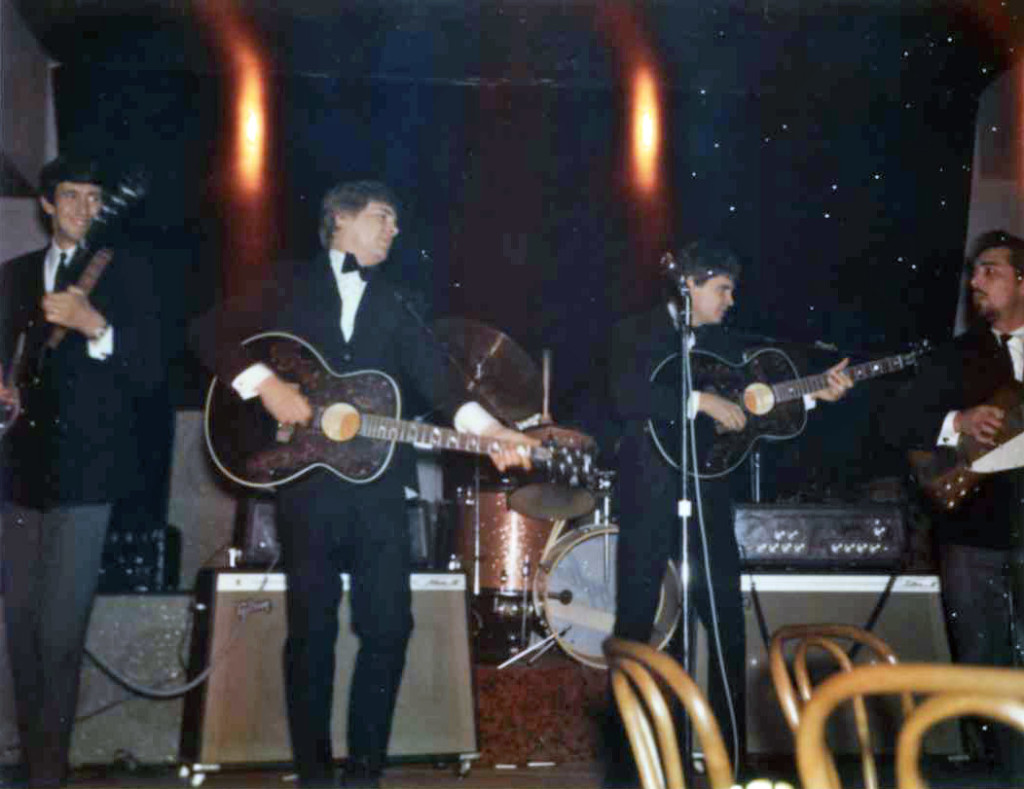
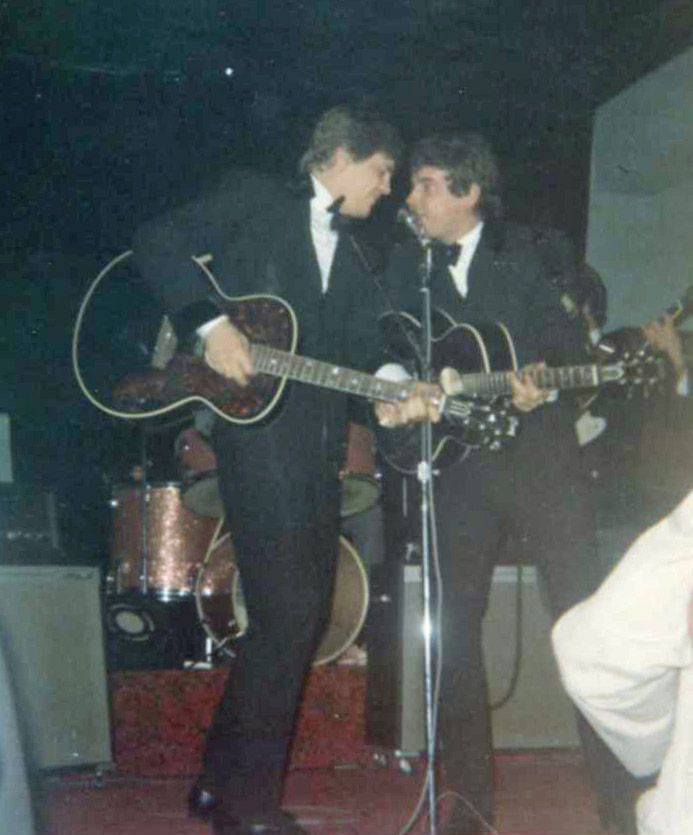
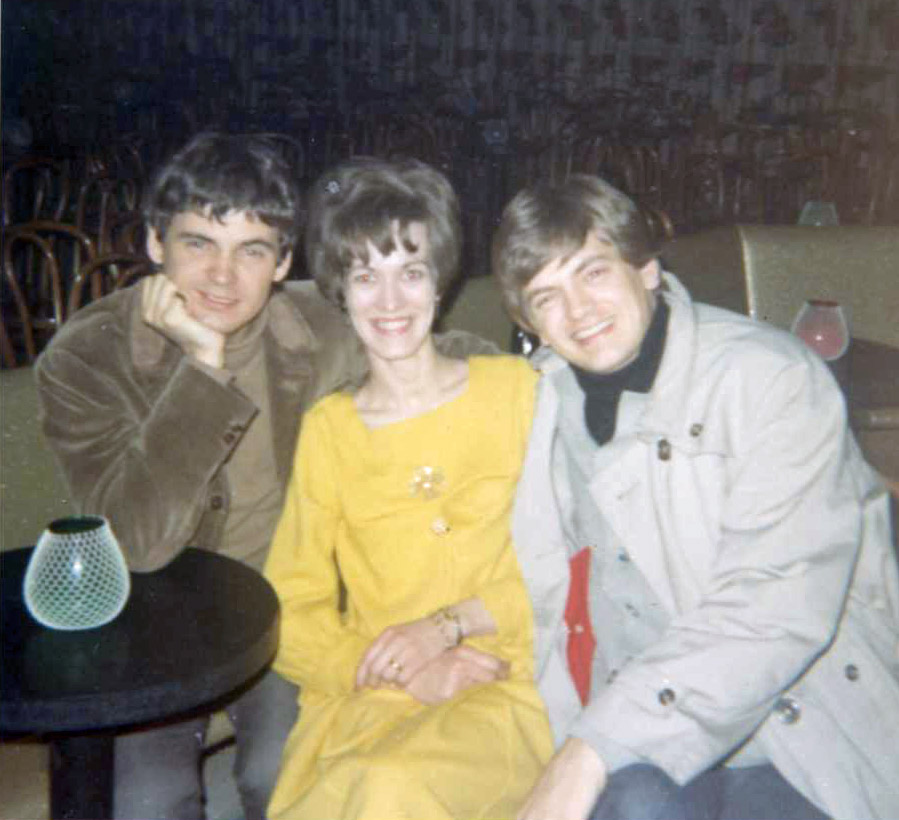
Don and Phil hanging out with our Annette!
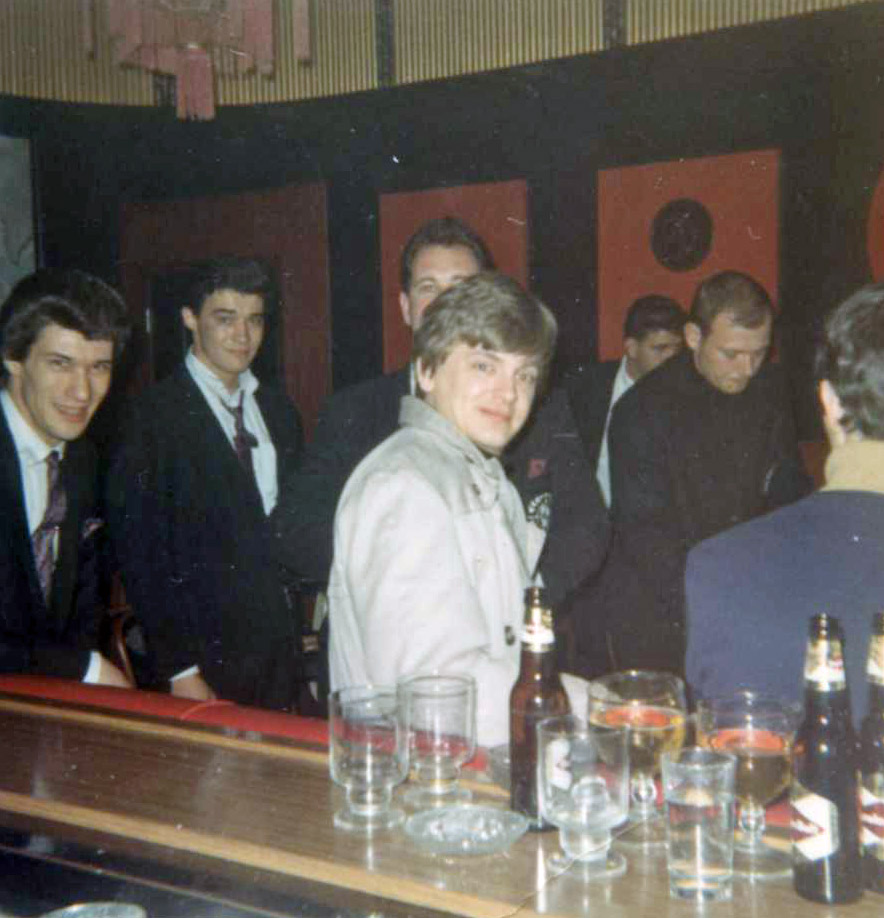
The Everly Brothers and all the Grain Belt you can belt!
- Vic and the Versatiles, “big sound from Chicago,” April 10 – 23, 1967.
- Bobby Goldsboro, April 17-23, 1967.
- The Big Beats, a 3 women, 2 man group from Las Vegas, April 24 – May 5, 1967.
- Ramsey Lewis, featuring Cleveland Eaton and Maurice White, May 9 – 14, 1967. After two nights Lewis pulled a muscle in his wrist (“an old injury”) and had to cancel. John: “It may have been legitimate, but some people thought it did look funny.” (Music Scene)
- The Fendermen, May 8 – 14, 1967.
- Los Blues, a group from Texas via the Sahara in Las Vegas, June 5 – 11, 1967.
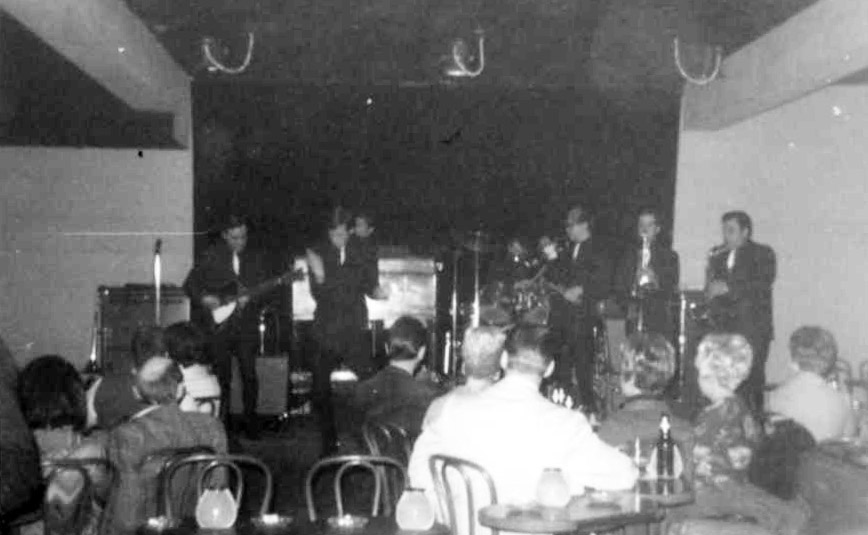
The Mob
- Sarah Vaughn with the Bob James Trio, June 12 – 14, 1967. Miss Vaughn conditioned her appearance on having a private dressing room and John built her one. She came by herself, just in time for her first performance. Will Jones quoted her in his June 15 column:
- ‘I’ve never worked in a place like this before,’ she said. She is part of a continuing experiment to see if substantial jazz and pop performers can’t be booked alongside the rock groups that are the bread-and-butter attractions. ‘I have the feeling that there are kids who come just for the rock, and there are people who come just to hear me,’ she said. When it’s time for me, the kids get up and leave. Some of them look like about 10 years old.’
- The MOB was brought back June 15 – July 2, 1967.
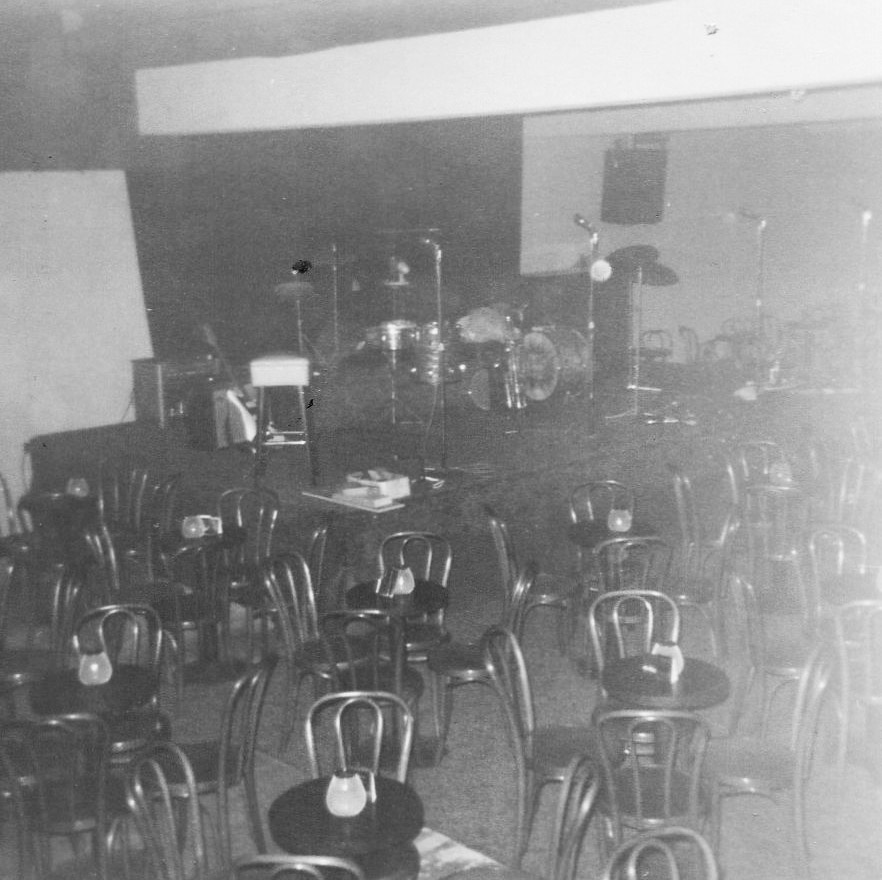
Snapshot of the adult club
GOING BROKE
The restaurant had opened in May 1967, decorated in a Roaring ’20s decor, but things weren’t going well. Robbinsdale was a tough sell, with a reputation as a sleepy suburb. On June 22, , 1967, Jim Klobuchar reported: “Night Club Owner is Bitter – Robbinsdale Takes its Lumps.” He quoted John as saying that club may have to shut down “because the town council is acting like a bunch of farmers. The town is a backward place with a dead bottom and a main street you can shoot a cannon down at 8 pm without hitting a soul.”
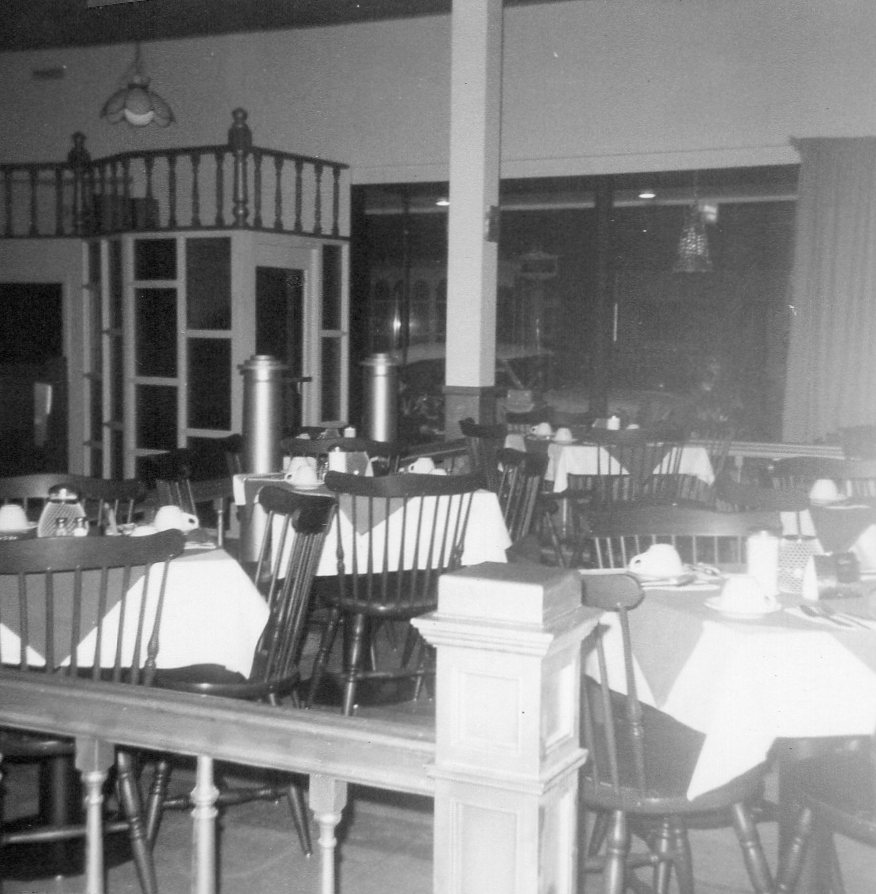
Someplace Else’s short-lived restaurant
LIQUOR WARS
The biggest problem was liquor. With only a permit to serve 3.2 beer, the appeal in an era of hard liquor was limited. John bemoaned that Sarah Vaughn’s shows had an impressive turnout “except that we had to charge $3.50 per head cover charge because all we had was the 3.2 beer. And we had to charge 75 cents for that. There is just so much 3.2 beer a person can drink before developing symptoms of bloat.”
Although the Mayor said that the businessmen on Broadway felt a club with a bottle license would boost the economy, others worried that granting one application might start a flood and cause too much traffic. One alderman thought West Broadway would become another Washington Ave. skid row!
THE MUNI
One of the biggest opponents of changing the City ordinance to allow “spiking” was Alderman John Joe Johnson, “who does most of his drinking in Crystal,” John averred. Klobuchar said that Johnson did not deny it. One of the reasons for that was that the municipal lounge was, in the words of the Mayor himself, “deplorable. You not only would not want to take your wife in there, you would not want to take your girl friend in there and there are times when you are having a snort when you wonder why you took yourself in there.” Klobuchar noted that the lounge “achieves a distinction of being loud and gloomy at the same time. It got so bad that the bartenders, when asked for a shot, were not sure whether the customer was talking about Old Taylor or tetanus.” Naturally the Twin Cities’ most popular journalist was hung in effigy, but his comments also prompted city leaders to spruce the place up: “They have built a new circular bar, decorated the front with stonework, hung some psychedelic lamp fixtures from the ceiling and put in a little elevated lounging stage that is flanked by a wrought-iron railing and firmly establishes the parlor as the Little Paris of West Broadway. The freshly-paneled walls are not only attractive but have the added virtue of convenience for some of the better lubricated customers, who can now carom off the walls in comfort and without physical danger.”
John Zieba tells us:
On sale was the light stone colored storefront and there was an off sale store to its left. The city moved the off-sale across 52 to Robin Center and expanded the bar into the extra space. My father, uncle and neighbor all tended bar there but retired before I was legal drinking age. Nonetheless, I remember it being a dump long before it was modernized, and it did move up to a nice dump by the time I got back from overseas.
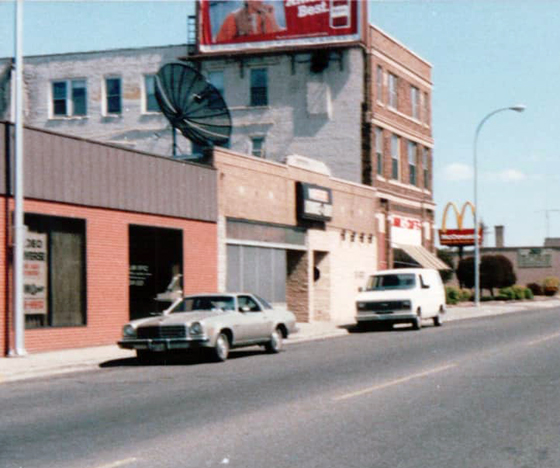
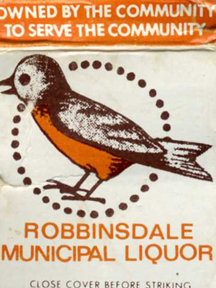
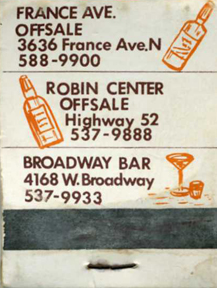
TEENS GO SOMEPLACE ELSE
Finally the Flahertys admitted defeat. They abandoned the restaurant and made their sophisticated adult night club into a teen club, open to kids ages 16 to 20 only. It was a hit! Teens poured into town, and all of a sudden Robbinsdale was happening! Annette says that she’s sure kids were filching money from their parents – they’d pay with silver certificates or rare coins from coin collections.
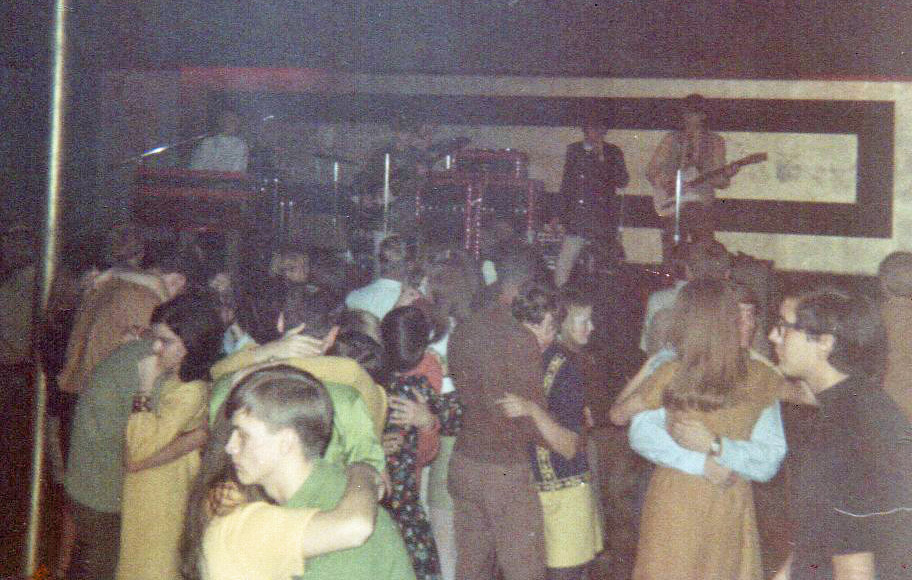
Well, this scared the townspeople to death. An indication of the antipathy toward the club is a letter dated Feb 9, 1968, from the City Manager to John outlining security requirements. “Finally, we must remind you that our men are over there to fill a legal need require of you and not necessarily of their own desire. We must both recognize that we have a man power problem that is going to become acute if: (1) any of our men do choose not to work for you or (2) if the hall is opened additional nights other than Fridays or Saturdays.” Ouch!
John was all over security, though. One innovation was the hiring of kids from each high school, clad in sports coats, as bouncers to keep their friends in line. All jackets, coats, and purses had to be checked, and they even installed one way mirrors in the men’s room (unbeknownst to the boys) so they could keep an eye out for contraband. (Just try that today!) There was a strict dress code, and kids knew that they were expected to behave themselves.
There was even some profiling going on: John said “We’ve turned a lot away for dress purposes – like cycle gangs – and we’ve spotted guys that are looking for fights and made them leave.” Robbinsdale raised his license from $200 to $1000 because “if the club decided to call the Robbinsdale Police Department this would reimburse them.” He already has two Hennepin County deputies. “We’ve tried to keep our prices at $1.50 when other places are charging $1.75, but we can’t now.”
A ROCKIN’ PLACE
But despite all the security, the teens managed to have fun. And although John preferred to bring in out of town acts in order to offer “something else,” the biggest draw were the local bands. “We brought in a group from Las Vegas last week that plays rhythm and blues, rock and roll and are a lot more polished than any local groups. I’m worried though as to whether the kids are too stuck on local bands. If they do support it, they’ll find themselves with a lot of first class entertainment.” Local bands included MET Souls, the Inmates, TC Atlantic, Happy Daze, 25th Century, and the Grasshoppers. Here’s the only other photo of kids enjoying the band.

SOUTH 40 AT SOMEPLACE ELSE
On March 20, 1968, the South 40 recorded a live album at Someplace Else. The Insider from March 30-April 6, 1968 described the session. [Master percussionist Chico Perez remembers: “The Buttons opened for South 40 recording night. Little did I know they would be Crow and show the world what’s up in Minneapolis. Wow, so I got lucky and joined the Boys and history tells the tale.Great place that I won’t forget.“]
Capacity Crowd Hears South 40 Live Recording Session
Over 1,000 people packed into The Someplace Else club on Wednesday, March 20th, to hear a “live” album recording session by The South 40 from Minneapolis.
By all standards in the business the session was a success. Much detail and planning had to be worked out and performance by all involved had to be flawless to achieve this success. This article will give you an idea of just what was involved in this huge undertaking.
First off, a club had to be chosen once the South 40, Metrobeat Records, and the David Anthony agency decided to record a live LP.
Someplace Else was picked because the club has good sound and its owner, John Flaherty, was in complete cooperation with the venture. Also the club provided easy access for the recording studio and its equipment.
Also, the club was also using the occasion to celebrate its first anniversary: Someplace Else will have been in business to the teen market one year this July.
Universal Audio was picked as the recording studio to handle the job because the band and other interested parties were pleased with former results at the studio.
Advertising on KUXL, WDGY, and KDWB Radio was purchased to announce the event, and posters were put up in the club weeks before the recording date. Direct mail was sent to all members of the club announcing the event, and discount coupons were passed out to dancers at the club for two weeks prior to the session.
Jimmy Reed and Tac Hammer from KRSI Radio, Minneapolis, and Dino Day from KQWB Radio, Fargo, were picked to handle the M.C. chores.
Metrobeat also mailed invitations to all the Twin City business execs in the industry.
The material recorded included most of the top favorite tunes in this market, plus four original compositions, penned by Larry Wiegand and Harry Nehls of the band. The entire band was involved in the arrangements of the material.
The original compositions will be published by Minniepaul Music.
The album cover will be printed in Nashville, and will utilize a four-color shot of the band and the club’s Marquee. A spokesman for the label says the cover will be deluxe. As of this writing, the pressing plant for the discs has not yet been chosen.
The LP is scheduled to appear on the market in May. A single may also be released from the LP about the same time, in a effort to secure airplay from stations which may not want to play album cuts.
The band asked me to express their deep appreciation to the following for helping to create this successful recording session: Metrobeat Productions; Someplace Else; Universal Audio; David Anthony Productions; The Buttons; Wagener Music; Connie’s Insider; Creative Impressions; Tracy Printing; Minniepaul Music; and Mike Barich, photographer. A special thanks to all the employees of Someplace Else for their complete cooperation.
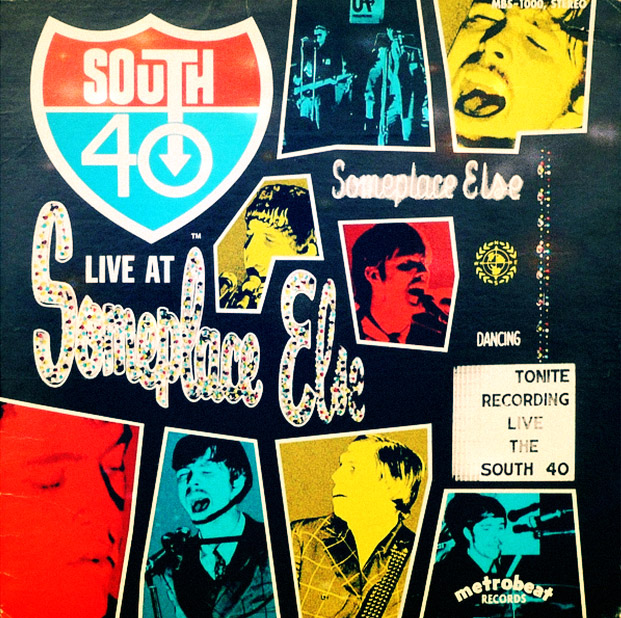
The album contained 10 songs, including cover songs and originals. 2,000 albums were pressed and all copies were sold. I did not get one, as I was 11 years old…
The lineup of the South 40 was David Waggoner on lead vocals; Larry Wiegand on bass guitar and vocals; Dick Wiegand on lead guitar and vocals; Kink Middlemist on guitar, keyboards and vocals, and Harry Nehls on drums and vocals. With personnel changes, the South 40 would soon become Crow.
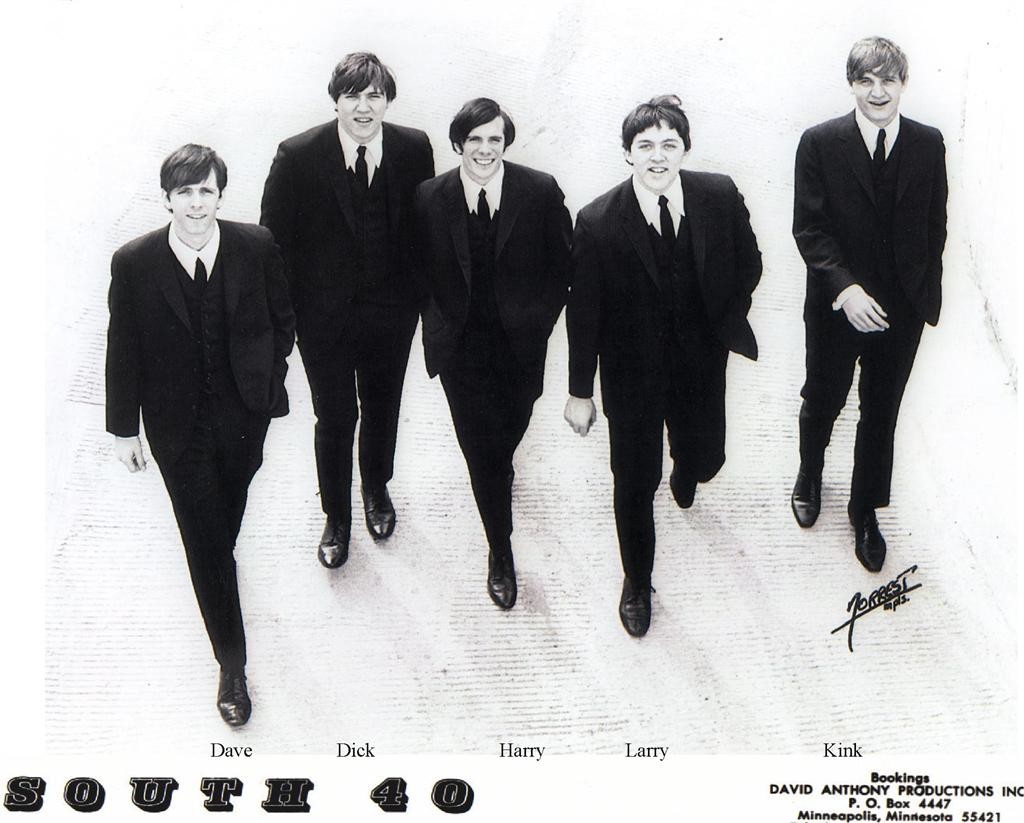
Photo of South 40 courtesy minniepaulmusic.com
TROUBLE
In about March 1968 the Flahertys sold the business to Arthur H. Lund, a 53-year-old retired executive of Campbell-Mithun Advertising Agency. It was unclear why he bought the business, although he did mention that he had four children between the ages 13 to 19. He didn’t like rock ‘n’ roll, though, and admitted to hiding in the basement to avoid it. To cut costs he cut down on security, with disastrous results.
On May 10 and 11, 1968, Police from Robbinsdale, Crystal, and the Hennepin County Sheriff’s Department broke up a possible gang fight. Five people were arrested, four of whom were under 18. Police broke up a brawl on Friday the 10th. On Saturday a fight broke out outside with 150 people gathered. A floorman needed first aid. The Saturday incident started at 41st Ave. N and west Broadway. Police moved the crowd back until it was near the Red Barn, four or five blocks south.
THE END
Ever hear how one guy spoils it for everyone? On Friday, August 16, 1968, one guy did. An unnamed 17-year-old got thrown out for being drunk. He drew a pistol from a small holster attached to his belt and shouted “I’m going to shoot I really am,” according to the Police Chief. He threatened 6-8 people before firing several shots in the parking lot across the street. He hit 18-year-old Gary Hendrickson in the chest, critically wounding him with a bullet that lodged in his lung. The shooter was disarmed by bystanders before police came. He was arrested and arraigned on August 19. The Robbinsdale Police Chief said he had a rap sheet of at least 20 charges starting from when he was six years old, many for assault.
Someplace Else was suspended by the City Council for eight days at a meeting on August 26, 1968. 200-300 people showed up for the meeting, many of them teenagers. Parents wanted it closed, teens wanted it to stay open. City Manager George DeLay cited “previous trouble, which resulted in fighting, a knifing, under-age drinking, and finally the shooting.” Police Chief George Roope read a list of 24 incidents since March 16, including: “minors being drunk, fights, thefts from autos, use of false identification, clashes involving Negro and white youths, and mugging of girls by other girls.”
Reasons for the demise were thrown around.
- Although there were six officers on duty inside the building, they merely threw troublemakers out instead of arresting them. Officers said that when they did bring miscreants to the police department, the kids were just warned and let go, so they didn’t bother.
- Minneapolis policemen were hired as security but they were not deputized to arrest.
- Lund was accused of providing inadequate security in the parking lots as specifically required by the police department.
On September 3, 1968, Someplace Else was closed down for good.
IT GETS WORSE
On November 13, 1968, the Jokers Wild had been using the empty club as a rehearsal space. At about 11:30 pm, a fire started under the stage, engulfing the west end of the building. The Robbinsdale and Crystal Fire Departments fought the fire for three hours. The cause of the fire was never determined.
The Jokers Wild had left their instruments there, and lost $20,000 worth of musical equipment that they were using courtesy of Park Music in St. Louis Park. There was no insurance coverage on the equipment and Sunn Amps refused to replace the destroyed equipment after the band drove it all back to the Sunn factory in Portland, Oregon. The band switched to Custom Amps and a PA, through Park Music, but the band was not happy with the sound and decided to make a switch and go to Torp’s Music in Richfield and obtain Marshall Stacks for Denny and Lonnie (two stacks each). David Anthony bought the band a Voice of the Theater PA system with cabinets and monitors. (Thanks, minniepaulmusic.com)
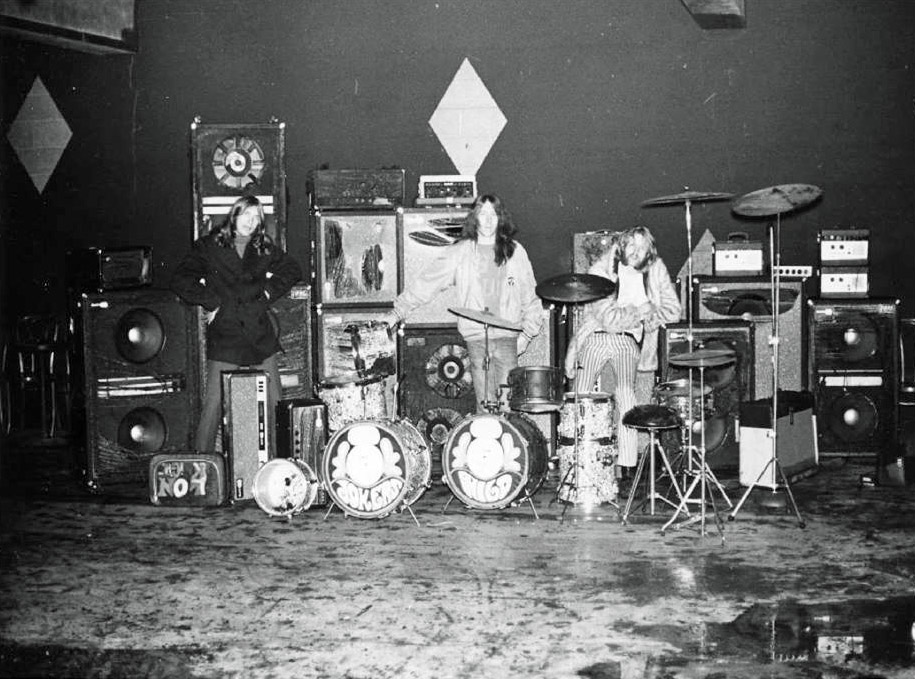
Jokers Wild photos above and below courtesy Lonnie Knight (the exasperated hippie on the right)
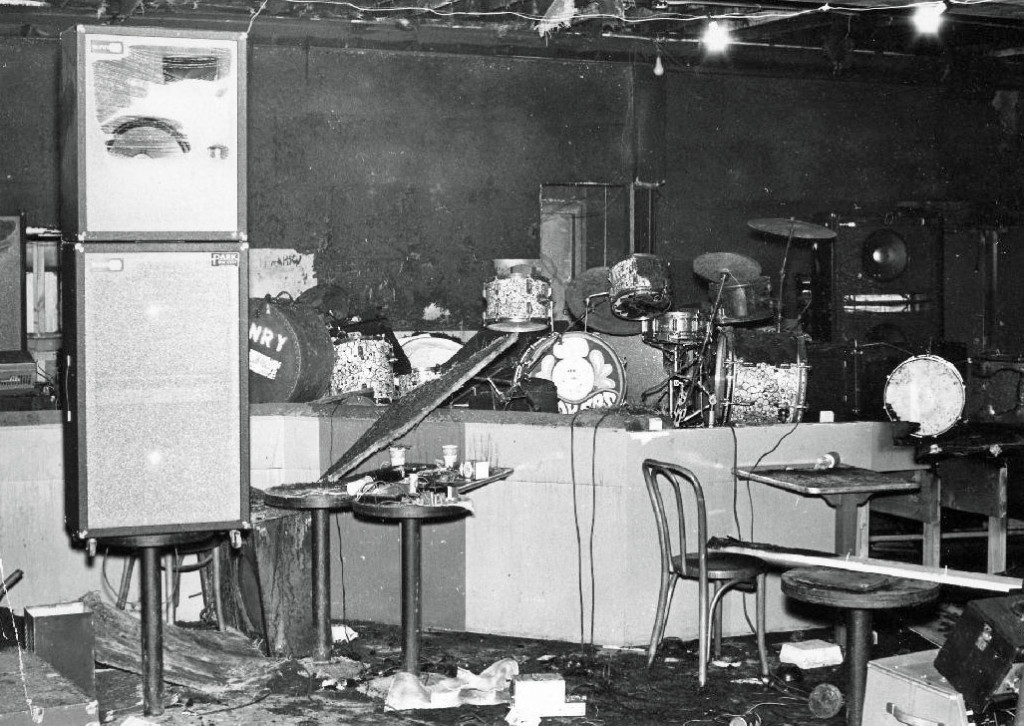
The building is still there on West Broadway. In 2015 it was Lion’s Gym.
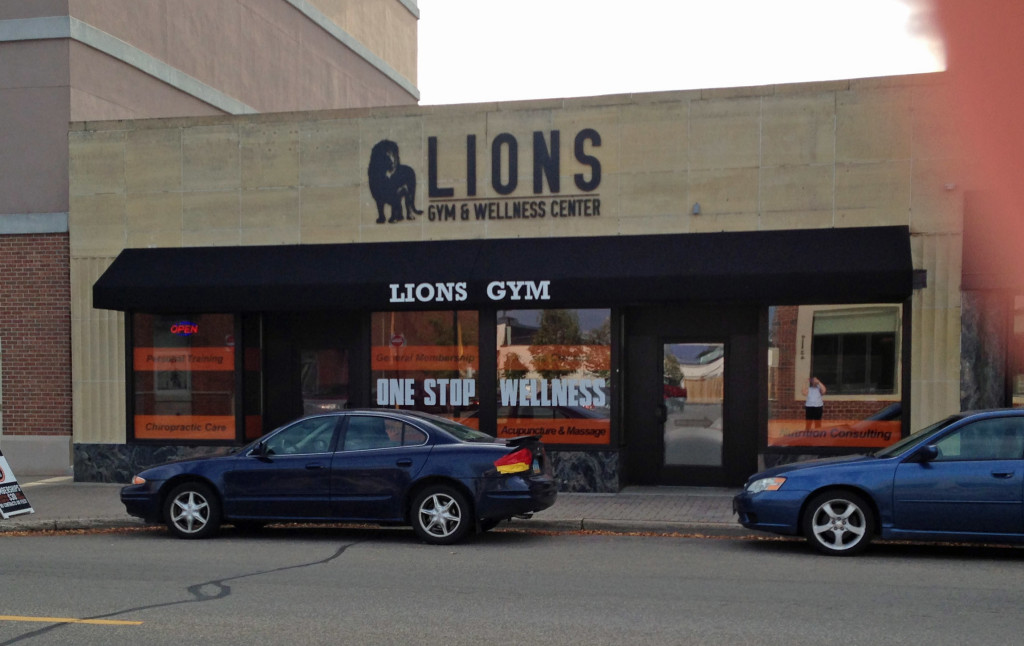
Sorry about my finger.
SOURCES
ALL of these materials were provided to me by Annette Flaherty and I thank her so much! (As happens in many scrapbooks, sometimes dates and papers are not available.)
- “‘Someplace Else’ is Appropriate Title,” Bob Bork, March 30, 1967
- “There’s Only One Sarah,” Will Jones, Minneapolis Tribune, June 15, 1967
- “Something Else’s New,” Will Jones, Minneapolis Tribune
- “Robbinsdale Studies Liquor Law Change – Council Visits ‘Someplace Else,’” Minneapolis Star, February 14, 1967
- “Sarah Vaughn Brightens New Rock Joint,” Don Morrison, Minneapolis Star, June 15, 1967
- “Strong Determination Saves Struggling Someplace Else,” Jan Erickson, September 21, 1967
- “Someplace Else” License is $1,000″
- “Night Club Setup License Discussed,” North Hennepin Post, July 6, 1967
- “Spiking Issue Set Monday,” March 9, 1967
- “Bottle Club License?,” February 16, 1967
- “Report is Rejected”
- “Night Club Owner is Bitter – Robbinsdale Takes its Lumps,” Jim Kloubuchar, Minneapolis Star, June 22, 1967
- “‘In the Heart of Robbinsdale’ Ceases to Exist,” Marnee Burnham, Robbinsdale Senior High School Robin’s Tale, September 19, 1968
- “‘Someplace Else’ Teen Club Closed,” Minneapolis Star, August 27, 1968
- “Club for Teen-agers Closed,” Marvin McNeff, Minneapolis Star, September 4, 1968
- “Robbinsdale City Council to Study Teen Center”
- “Gray Flannel to Underbeats – Ad Executive Opens Teen-Age Club,” Minneapolis Star, March 21, 1968
- “Weekend Trouble Handled,” May 16, 1968
- “Teen Center ‘In Trouble’ After Shooting?” North Hennepin Post, August 22, 1968
- “Capacity Crowd Hears South 40 Live Recording Session,” Connie’s Insider, March 30, 1968.
- “Someplace Else,” The Music Scene, June 1967
- “33 Volunteers Fought Blaze, and Cause is Still Unknown”
- minniepaulmusic.com


